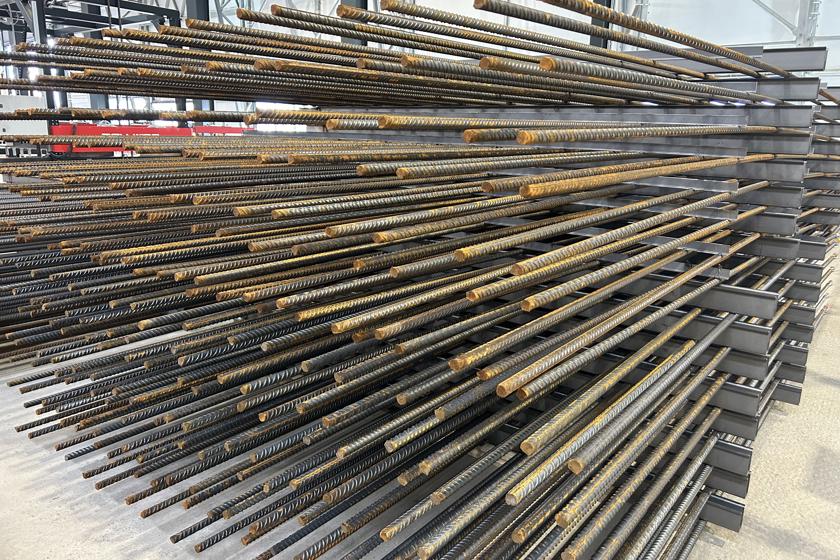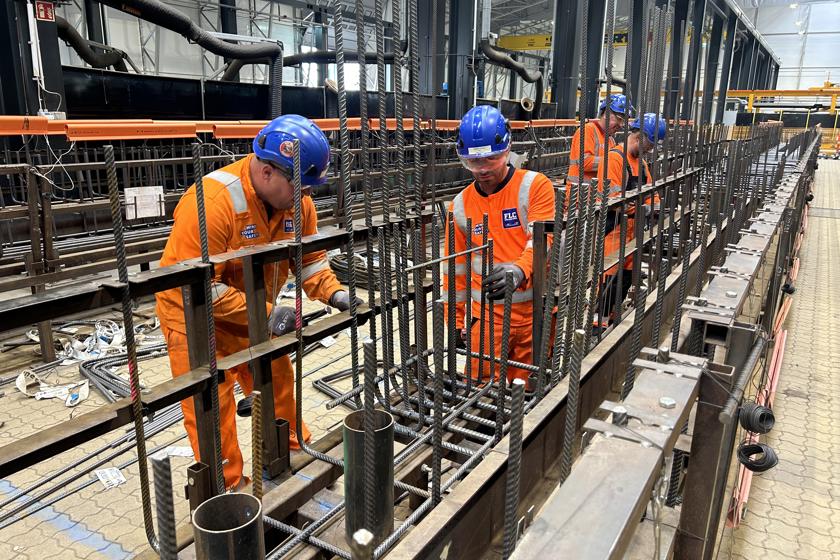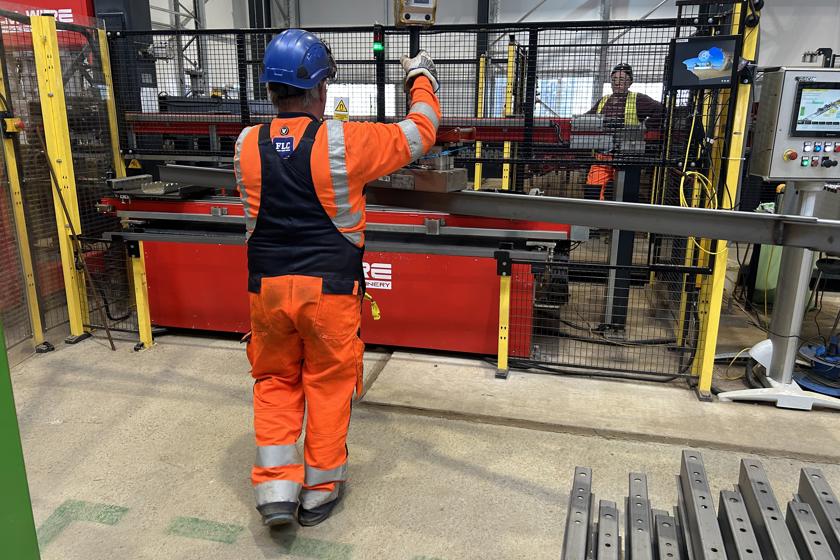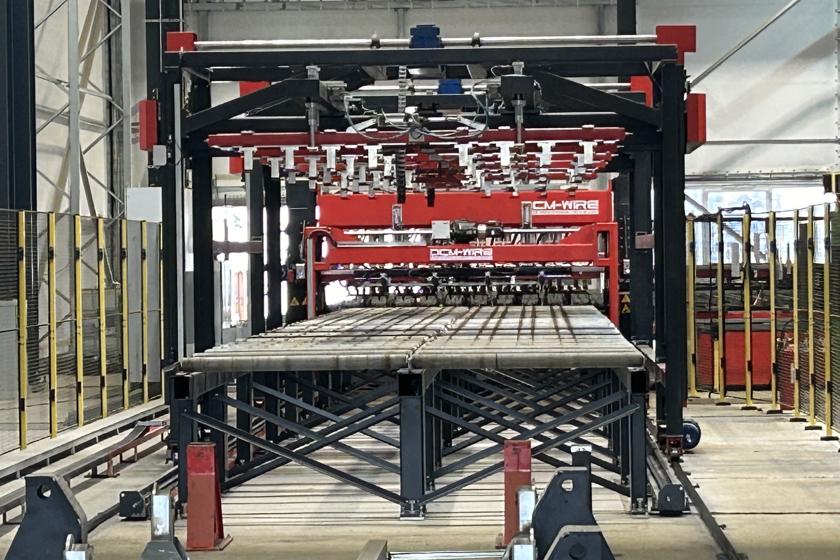A substantial amount of steel is required to build the world’s longest immersed tunnel, and the task of bending, cutting, and welding the thousands of tons of steel is one of the most critical tasks in the project.
The tunnel elements that make up the Fehmarn Belt tunnel are cast around massive cages of reinforcement steel. This steel skeleton is what gives the element its strength, and as all production lines in the factory have come into operation, the need for steel for the reinforcement cages has increased significantly.

The work is so critical for the construction that in 2023, it was decided to erect a separate factory hall on the construction site to supply the element factory and portal construction with steel in the right quantities and quality.
The hall, called the Panel Factory, covers about 13,000 m² of the construction site and employs around 120 workers working in two shifts. This allows the team behind the Panel Factory to deliver about 1,500 tons of processed steel to the rest of the construction site each week.

The steel processing hall has the great advantage of allowing steel to be cut to the precise sizes needed. This reduces waste and simultaneously strengthens the supply security for the project by producing steel grids to size and on demand.
Welding steel is traditionally hard physical work, but in the Panel Factory, all manual heavy lifting has been completely eliminated. The heaviest lifts are performed by large overhead cranes, while small lifts make it easy for individual workers to move smaller steel parts between machines. Additionally, welding work emits toxic fumes, and therefore all welding takes place in special areas with strong extraction systems.

However, most of the work is done by the two unique robotic welding machines, which handle over 70 percent of the production. The robots are fed by a magnetic crane that can lift up to five tons of steel at a time. The steel comes in rods up to 15 meters long and 32 millimeters in diameter.
The robotic welding machine is a prototype made by the Spanish company DCM-Wire. Normally, these machines are used to make thin panels for fences, and the Fehmarn project is the first place in the world where robotic welding machines are used to weld reinforcement steel of this thickness.


